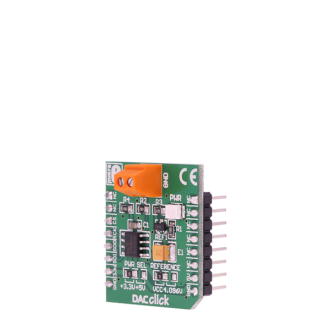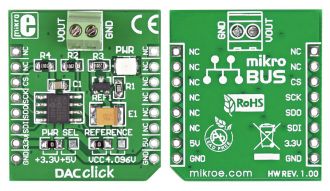
We strongly encourage users to use Package manager for sharing their code on Libstock website, because it boosts your efficiency and leaves the end user with no room for error. [more info]

Rating:
Author: MIKROE
Last Updated: 2018-07-31
Package Version: 1.0.0.1
mikroSDK Library: 1.0.0.0
Category: DAC
Downloaded: 13006 times
Followed by: 1 user
License: MIT license
This example demonstrates usage of the DAC click board in mikroBUS form factor. Board features 12-bit Digital-to-Analog Converter MCP4921 that features SPI interface and an optional double buffered output.
Do you want to subscribe in order to receive notifications regarding "DAC click" changes.
Do you want to unsubscribe in order to stop receiving notifications regarding "DAC click" changes.
Do you want to report abuse regarding "DAC click".

